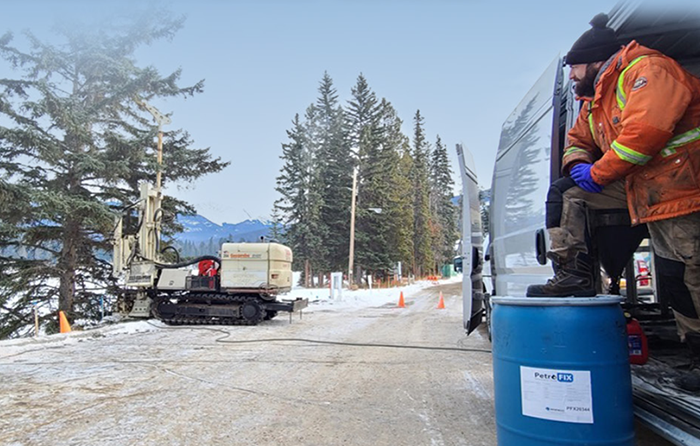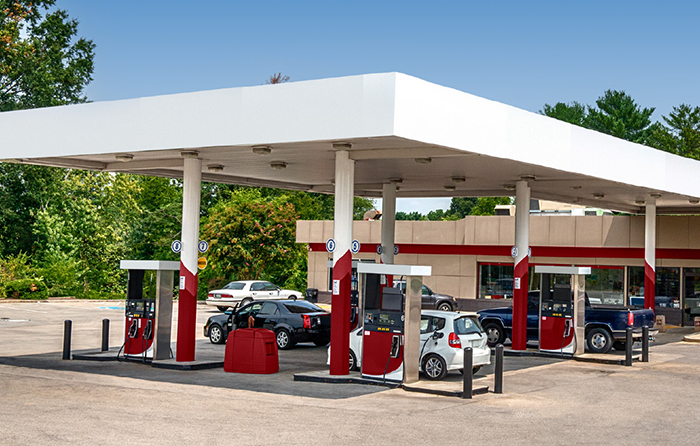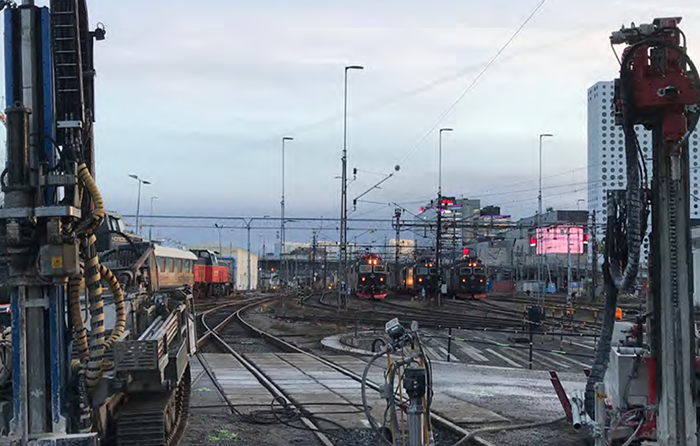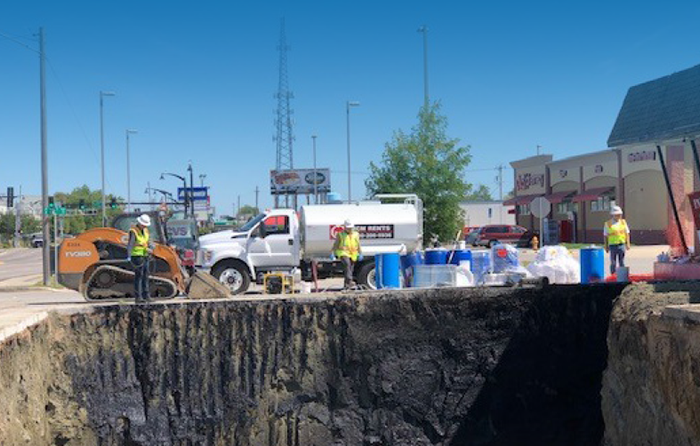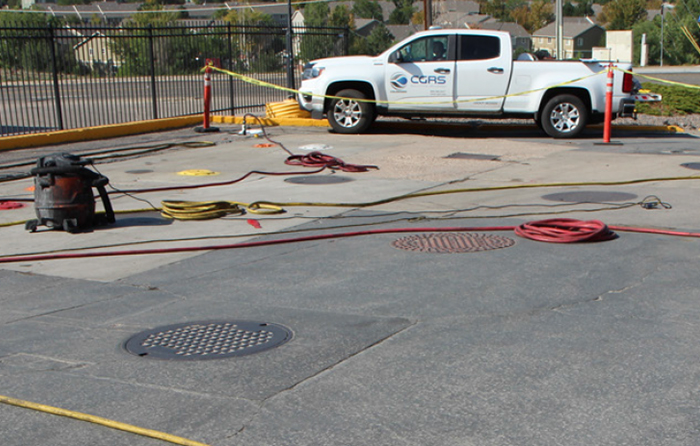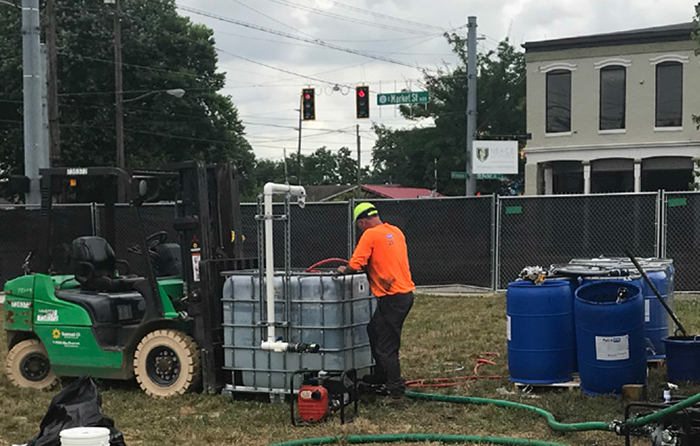PetroFix Estimated to Save $1 Million Compared to Long-Term Monitoring
Case study highlights:
- PetroFix achieved rapid and sustained MTBE reductions below cleanup objectives
- At only 8% of the cost of a monitoring only approach, PetroFix saved more than $1 million for this project
- West Central Environmental Consultants (WCEC) designed the remedy using the PetroFix Design Assistant™, backed by REGENESIS technical support
This case study reviews a successful PetroFix application that placed a Washington underground storage tank (UST) site on track for closure while saving more than $1,000,000 in comparison to alternate approaches considered at the site. The site is a former service station and bulk petroleum plant in Sunnyside, Washington, where petroleum hydrocarbons were discovered leaking from USTs in the late 1990s. WCEC, an environmental consulting company highly experienced in addressing petroleum-contaminated sites, investigated the site and observed light non-aqueous phase liquids (LNAPL or free product). In response, WCEC completed interim remedial measures, including excavating grossly impacted soils and installing a free product recovery system. WCEC completed further remedial investigation over the next several years. In Situ remediation activities began in the early 2000s with the injection of oxygen enhancing amendments to stimulate biologically-mediated aerobic oxidation of petroleum hydrocarbons. Investigation and oxidation injections were expanded to address other impacted site areas in phases. Although the oxygen enhancement injections reduced the hydrocarbon mass, soil and groundwater contamination remained, including MTBE (methyl-tert-butyl-ether) concentrations exceeding the Washington Department of Ecology’s action level.
PetroFix – EU and UK Project Experience
Case study highlights:
- PetroFix has been successfully used in over 600 sites across 15 countries worldwide, demonstrating its effectiveness in treating petroleum hydrocarbon contamination on a global scale.
- In a commercial redevelopment site in the UK, PetroFix was applied to treat diesel range TPH contamination, allowing for the installation of geothermal boreholes for climate control in a new development while minimizing disruption and ensuring a safe and rapid treatment process.
- PetroFix has been applied in various site types, including fuel depots, industrial tank farms, petroleum retail stations, and oil spill sites, showcasing its versatility and compatibility with different geologies and contamination levels.
This document provides an overview of our Petrofix® project experience across Europe and the UK. PetroFix offers a cost-effective, in situ treatment for petroleum hydrocarbon contamination. It has been used at more than 600 sites to date, across 15 countries worldwide. Applications listed include different project types, such as petrol filling stations, rail depots, active industrial manufacturing facilities, brownfield and oil spill sites, in varying geologies and contaminant concentrations.
Proven, Rapid, and Cost-Effective Petroleum Spill Treatment
Case study highlights:
- Nine sites IRSL treated with PetroFix have already achieved closure, most within one year after a single injection event
- PetroFix chosen at UNESCO World Heritage site due to sensitivity of a pristine water body at the site, offering a less disruptive approach to address PHCs
- IRSL proficiently uses the PetroFix Design Assistant to develop and store its own PetroFix remedial application designs
- Site remedies have led to significant cost savings for IRSL’s clients and demonstrated PetroFix as a viable means for treating PHC-contaminated sites in Canada
The case studies included in this multi-site review include sites where one of Canada’s largest and most experienced environmental remediation services companies InSitu Remediation Services Ltd. (IRSL) effectively used PetroFix in achieving site closures across Canada. InSitu Remediation Services Ltd. (IRSL), one of Canada’s largest and most experienced environmental remediation services companies, uses PetroFix to mitigate sites throughout Canada impacted by petroleum hydrocarbons (PHCs), relying on the technology as an effective, low-cost, and more sustainable remedial solution. As one of the first to apply PetroFix in the field, IRSL has deployed the PetroFix technology to remediate a large number of PHC-contaminated properties, with land use ranging from gasoline stations and commercial properties to residential homes and a national park lodge. PetroFix has quickly eliminated PHC impacts in groundwater at these sites and prevented contaminant movement away from impacted properties, thus eliminating potential human exposure to PHCs and protecting pristine, ecologically sensitive surface waters.
Cleanup Goals Met Post PetroFix Application
Case study highlights:
- Injecting PetroFix was the lowest cost option and fastest route to site closure
- An air sparge/multi-phase extraction (AS/MPE) system provided significant reductions to PHC concentrations, but was unable to meet required cleanup levels
- PetroFix application quickly achieves cleanup goals and sustains reductions for over two years
This case study reviews a former gasoline station located in the Florida Panhandle, where an underground storage tank (UST) release site is now poised for closure. After reviewing the available remedial options, Advanced Environmental Technologies, LLC (AET), a leading environmental consulting and engineering firm, determined PetroFix® Remediation Fluid would provide the most economical and efficient means to reduce concentrations below the groundwater cleanup target levels and achieve site closure. Injection of PetroFix, a field-proven, colloidal activated carbon technology developed for PHC treatment, is a highly targeted and minimally invasive in situ approach, requiring low pressure for injection delivery. Since this was an active business, these features were favored for the minimal impact on operations compared to other approaches.
>99% Contaminant Reduction at Largest Train Maintenance Depot in Northern Europe
Case study highlights:
- Carefully designed integrated remediation strategy used physical, chemical, sorptive and biological treatment
- Innovative use of PetroFix Permeable Reactive Barriers (PRBs) completed to prevent residual contaminant egress from outside of the treatment area and protect against future spills
- Significant reductions of petroleum hydrocarbons have been achieved onsite – starting with LNAPL and reaching stringent target values – within nine months
This case study reviews the in situ remediation strategy implemented across the largest train maintenance depot in northern Europe, located in Hagalund, Sweden. As part of the remedial application, Swedish remediation contractor Envytech installed a network of additional monitoring wells across the site. This was done to better delineate the plume and identify any unknown contamination prior to commencement of remediation. Site investigations identified LNAPL across much of the northern area of the site, which required a revised groundwater remediation strategy.
Injectable Permeable Reactive Barrier Stops MTBE and Benzene Plume
Case study highlights:
- Pilot test proves injectable permeable reactive barrier (i-PRB) successful at reducing MTBE and benzene
- Technologies used: PlumeStop and ORC Advanced
- Monitoring data includes sampling event at 27 months post-injection
- Full-scale treatment scheduled
Fuel losses at a former petrol filling station in western Belgium, had resulted in the contamination of soil and groundwater with petroleum hydrocarbons and oxygenate additives. During the decommissioning of the site the source area was remediated, however a residual groundwater plume was left in place. Having taken over the site from the previous owner, OVAM determined that this plume represented a potential environmental and human health risk. OVAM required active remediation to take place and Group Van Vooren worked with REGENESIS to develop a suitable strategy. Read the case study to learn more about this site, the remediation approach taken and the results achieved from the pilot test.
Eight UST Sites Closed or On-Track for Site Closure using PetroFix
Case study highlights:
- Case studies of eight UST sites closed or on-track for site closure using PetroFix, including contaminants treated, approach, remedial design and results
- Antea Group applied PetroFix using in situ application methods which included direct push injections through grid and barrier arrays and excavation emplacement
- Why Antea Group readily adopted a promising new remedial amendment for site closures
This multi-site case study reviews eight underground storage tank (UST) sites where the leading global environmental consulting firm Antea® Group has closed the site or positioned it to be on-track for closure using PetroFix. Antea Group is amongst the first environmental consulting companies to recognize and adopt PetroFix as a tool to rapidly reduce PHC impacts and achieve remedial objectives in groundwater. Applying PetroFix with economic efficiency, the company successfully advanced a portfolio of legacy UST release sites through the closure process over a short timeframe. In this effort, Antea Group sought and obtained approvals through multiple state regulatory agencies, self-completed the designs to determine dosing and injection layouts, implemented PetroFix treatments using different in situ application methods, and conducted performance monitoring to demonstrate remedial objective attainment.
PetroFix Applied to Active UST Basin, Quickly Meeting Cleanup Goals
Case study highlights:
- Innovative tank basin flooding method fully treats gasoline contaminants at active gas station site
- PetroFix was injected into the wells at a controlled rate with minimal pressure – just 3 PSI on average
- PetroFix is chemically compatible with the existing UST system on this site
This case study reviews an active gasoline station in Colorado where stained soils were discovered during the replacement of the underground storage tank (UST) spill buckets. After considering multiple options, CGRS, a leading environmental consulting firm, developed and implemented an innovative, low-risk, and highly cost-effective treatment program utilizing PetroFix® to address the groundwater contamination in situ. Contamination associated with this release was later confirmed within and adjacent to the UST basin with benzene, ethylbenzene, xylenes, and MTBE concentrations in groundwater detected above the Tier 1 risk-based screening levels. As a result of these groundwater impacts, further corrective action was warranted. The site and UST system where the release occurred is fully operational and groundwater contaminants were mostly contained within the active UST basin. However, some contaminants had migrated into the surrounding soils (predominantly clayey sand) and weathered bedrock (claystone). Consequently, a remediation approach was needed that would be minimally disruptive, chemically compatible with the active UST system, and highly effective.
No Further Action Granted, Allowing Site Redevelopment to Move Forward
Case study highlights:
- PetroFix rapidly reduces PHC contaminants to achieve closure goals and avoid future disruption and cost exposure
- EnviroForensics, an Indianapolis-based environmental consulting firm expert in developing site closure strategies, was contracted by the town to pursue regulatory closure
- PetroFix treatment eliminated the need for costly groundwater monitoring and unnecessary time and disruption to document plume stability
This case study reviews four orphan underground storage tanks (USTs) that were discovered at a former gas station site slated for redevelopment in a Southern Indiana town. Since the site was scheduled for redevelopment, it was necessary to eliminate future cost and disruption and demonstrate plume stability and Monitored Natural Attenuation (MNA) conditions. EnviroForensics was contracted by the town to pursue regulatory closure. Since the site was scheduled for redevelopment, it was necessary to eliminate future cost and disruption and demonstrate plume stability and Monitored Natural Attenuation (MNA) conditions. EnviroForensics decided to treat these low-level, residual impacts by injecting PetroFix® into the underlying groundwater. Following completion of the application design using PetroFix Design Assistant online software at www.petrofix.com/design, Enviroforensics mobilized to the site and completed the application in July 2019.
PetroFix Reduces Benzene 99% Positioning Site to Achieve Closure
Case study highlights:
- PetroFix is chosen as the final remediation solution to achieve site closure
- Low injection pressures maintained throughout the application
- With 99% benzene plume reduction maintained, the site is positioned to achieve closure status
This case study reviews a retail petroleum station with a petroleum hydrocarbon plume in groundwater originating from the UST pit and extending offsite across a roadway and onto another commercial property. After evaluating a range of remedial options, the environmental consultant CGRS specified PetroFix as the most economically feasible option to quickly remediate the benzene plume and achieve site closure. Prior to the PetroFix treatment, CGRS performed numerous remediation activities between 2003 and 2019, including, excavation, air sparge system pilot testing, soil vapor extraction, in-well oxygen diffusion systems, pilot and/or full scale injections of carbonbased and chemical oxidizing mixtures. The combination of these remediation activities substantially reduced much of the soil and groundwater contaminant mass over time. However, the overall magnitude and extent of the benzene plume persisted above the site closure objectives, prompting further remediation. CGRS worked directly with REGENESIS to design the in situ remediation.

 Americas
Americas Europe
Europe Français
Français Deutsch
Deutsch Italiano
Italiano Español
Español

